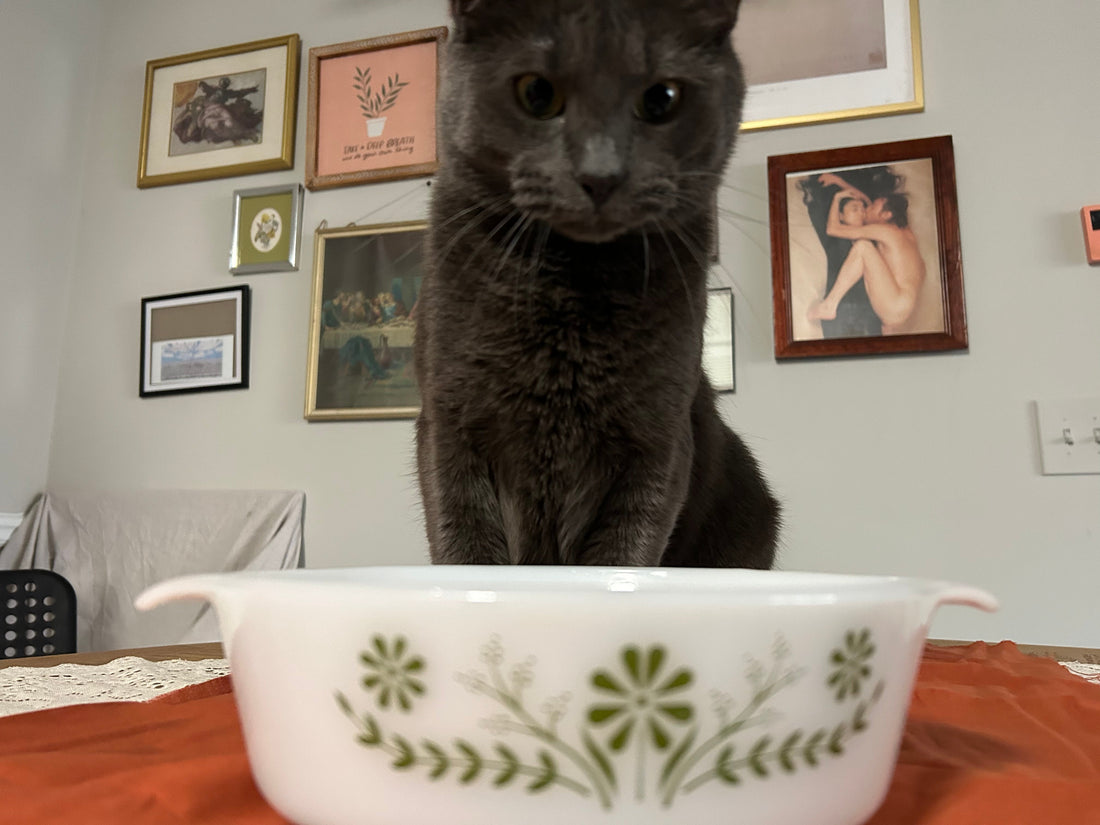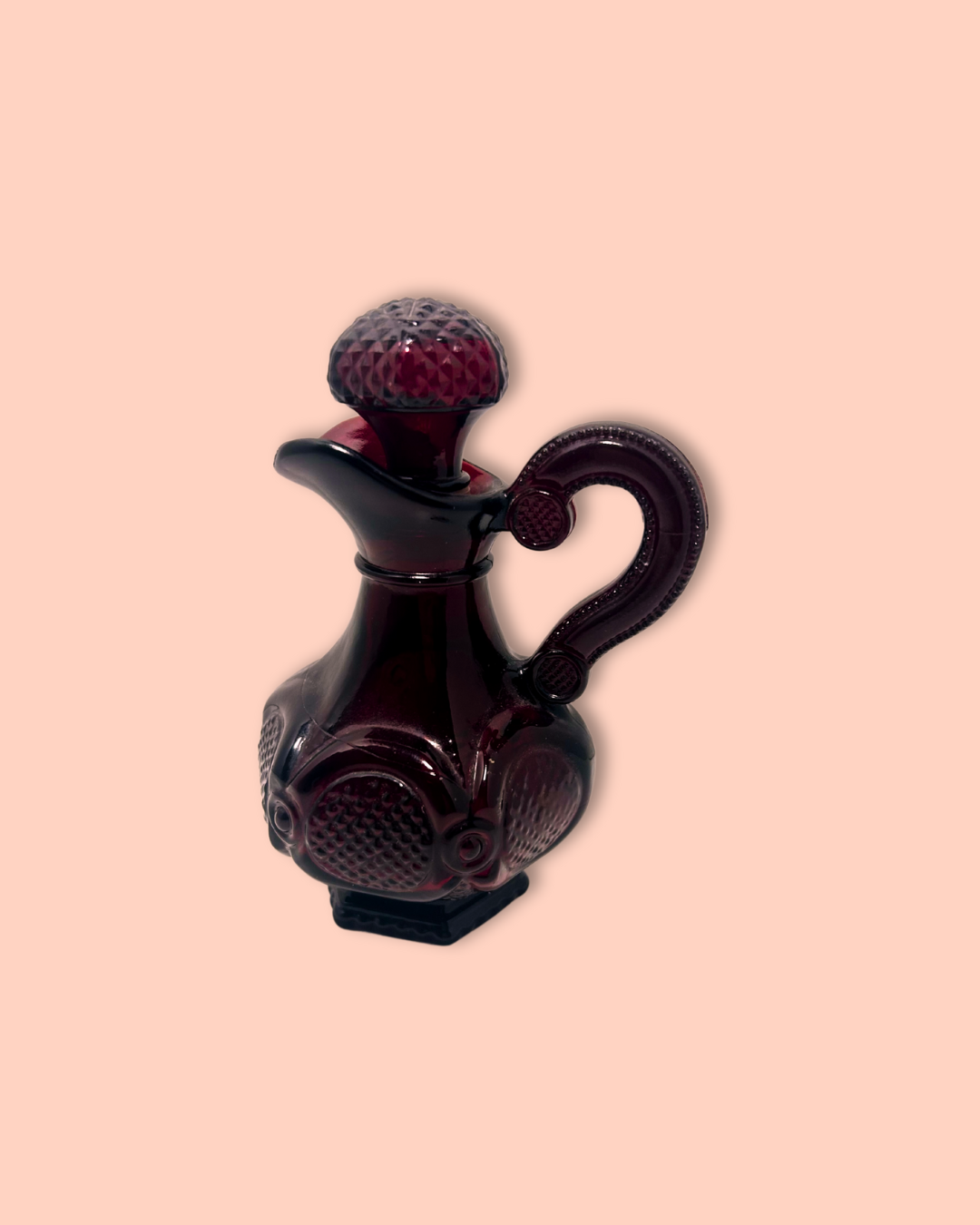
Clink, Clink! R.A.E's Guide to Vintage Glassware
Share
Vintage glassware has been a staple in my life for as long as I can remember. Saturday lunches at my grandma’s house were a cozy tradition, and I always knew we were in for something delicious when she set that iconic Pyrex casserole dish on the table. It wasn’t just a meal—it was a moment, made more special by the pieces we passed around.
So, what exactly is vintage glassware?
In simple terms, it’s the charming, often colorful glass dishes, cups, and serving pieces made between the 1920s and 1970s. Think Depression glass in soft pinks or cobalt blues, delicate milk glass with ornate designs, or those dreamy iridescent Carnival pieces that catch the light just right. While many of these items were mass-produced, each one carries its own story, full of character and perfectly imperfect beauty.
Why the Comeback?
Lately, vintage glassware has been making a huge return—and honestly, it makes total sense. People are searching for meaning in the things they bring into their homes. In a world that moves fast and feels overwhelmingly digital, there’s something grounding about sipping from a glass that’s been passed down or rediscovered at a flea market. Plus, it’s a beautiful and sustainable way to decorate—like giving the past a second life.
According to Veranda.com, “glassware that is more than 100 years old is considered antique, while anything that is at least 40 years old is considered vintage” (Koonce, 2025).
A Quick Guide to the Most Loved Types of Vintage Glassware
Here’s a simple breakdown of the most popular types you’ll come across—whether you’re thrifting, inheriting, or collecting with intention.
Art Glass

Unique, hand-blown pieces made in the early 1900s by companies like Tiffany Favrile, Durand, Quetzal, and Steuben. Known for their artistic shapes, abstract details, and bold colors—perfect for lovers of mid-century modern.
Carnival Glass

First made by Fenton in 1908, this glass is famous for its rainbow-like, iridescent sheen. Originally inspired by higher-end art glass, it became a more accessible way to add glam to everyday life.
Depression Glass

Mass-produced between 1929 and 1939 to lift spirits during the Great Depression. It came in dreamy shades like pink, green, amber, and cobalt blue. Affordable then, highly collectible now.
Elegant Glass

Made around the same time as Depression glass but with a fancier twist. Elegant glass was produced by high-end manufacturers like Cambridge, Fostoria, Heisey, and Duncan & Miller. The quality is higher, with finer etchings and richer details.
Milk Glass

Known for its opaque white (and sometimes pastel) look, milk glass was super popular in the 1950s–70s. You’ll often find it in pedestal bowls, vases, and hobnail patterns—equal parts pretty and practical.
Kitchen Glass

Think function meets retro flair. This category includes mixing bowls, refrigerator dishes, measuring cups, and bakeware made from the 1920s–1930s. Brands like Pyrex, Fire-King, and Anchor Hocking made pieces in colors like Jadeite, Delphite, and Platonite that are now iconic in vintage kitchens.
Fenton Glassware

Operating from 1905 to 2011, Fenton was one of the biggest names in American glassmaking. They created everything from hobnail milk glass to rich cranberry-colored pieces. Their designs are detailed, collectible, and often signed.
✨ Bring a Little History Home
There’s a reason vintage glassware feels so timeless—it connects us to simpler moments, family stories, and creative craftsmanship that still holds up today. Whether you’re starting a collection, hunting for that perfect piece at a flea market, or just curious about what’s in grandma’s cupboard, there’s something magical waiting for you in every clink and sparkle.
🛍️ Check out our curated Glassware Collection [here]! Bring home a piece of the past—because beauty, history, and meaning never go out of style.
Citation:
Koonce, Madoline Markham. How to Identify Antique and Vintage Glassware, According to Experts. Veranda.com, 2025.
